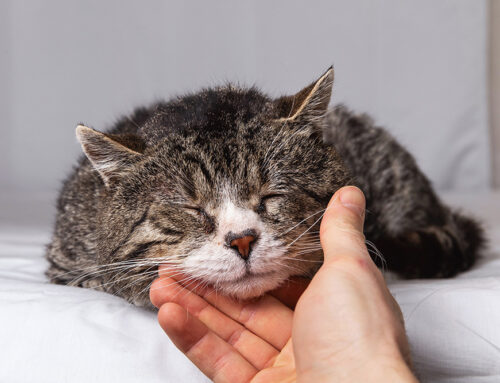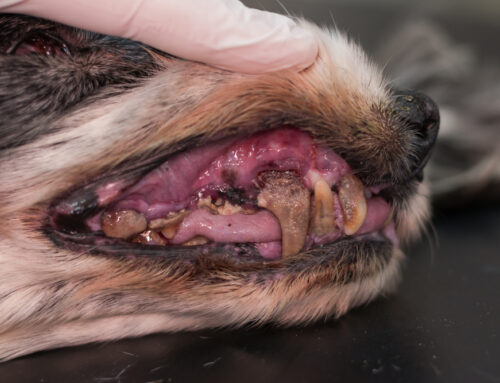At Woodland Springs Veterinary Hospital in Fort Worth, Texas, we know how deeply you care about your pet—not just their physical health, but their emotional well-being, too. One of the most common (and often misunderstood) behavioral challenges we help pet parents navigate is separation anxiety.
Separation anxiety can manifest as destructive behaviors, excessive vocalization, or even signs of depression when pets are left alone. These behaviors aren’t signs of disobedience—they’re symptoms of genuine emotional distress.
Fortunately, separation anxiety is manageable with the right support. In this guide, we’ll explain:
- What causes separation anxiety in pets
- How to spot early warning signs
- The most effective treatment strategies
- How Woodland Springs Veterinary Hospital can help
By understanding and proactively addressing this condition, you can help your pet feel safer, more secure, and more at ease—whether you’re home or away.
What Is Separation Anxiety in Pets?
Separation anxiety is a psychological condition in which pets experience intense stress when separated from their owners. While it’s most commonly seen in dogs, cats can also be affected—though their symptoms may be more subtle.
How Separation Anxiety Looks in Dogs
- Barking, howling, or whining when left alone
- Chewing furniture, digging at doors, or other destructive behavior
- Pacing, drooling, or accidents indoors
- Overexcitement upon your return
How It Can Show Up in Cats
- Excessive meowing or yowling
- Urinating outside the litter box
- Overgrooming or hiding
- Scratching doors or furniture when you leave
What Causes Separation Anxiety?
Several factors can contribute to a pet developing separation anxiety:
- Genetic tendencies and breed predispositions (e.g., Velcro dog breeds)
- Past trauma, rehoming, or time in shelters
- Major life changes like moving homes, changes in schedule, or losing a companion
- Lack of early socialization during key developmental windows
Recognizing the Symptoms: Is It Separation Anxiety or Something Else?
Some signs of separation anxiety overlap with other medical or behavioral issues, such as boredom, lack of training, or even urinary tract infections in cats. That’s why accurate diagnosis matters.
At Woodland Springs, we conduct a comprehensive behavioral assessment, review your pet’s medical history, and rule out underlying health issues to determine whether separation anxiety is the true cause.
Treatment Options for Separation Anxiety
Separation anxiety doesn’t have a one-size-fits-all solution—but there are several effective strategies that can be combined for best results.
1. Behavior Modification
This is the foundation of treatment and focuses on helping your pet feel safe and confident when left alone.
- Desensitization: Gradually increasing the time your pet is left alone so they can build tolerance
- Counterconditioning: Creating positive associations with your departure using treats, puzzles, or calming toys
- Arrival & Departure Routines: Keeping greetings and goodbyes low-key to avoid triggering excitement or stress
Learn more about preventive behavioral care
2. Environmental Enrichment
Keeping pets engaged during alone time reduces boredom and anxiety.
- Interactive puzzle toys and slow feeders
- Calming music or pet-specific soundtracks
- Pheromone diffusers (like Adaptil for dogs or Feliway for cats)
- Safe window views or pet-safe TV programming
DIY ideas: Cognitive toys for dogs | Enrichment for indoor cats
3. Medication Support (If Needed)
For pets with moderate to severe separation anxiety, short- or long-term medications may be recommended alongside behavior training.
- When is medication appropriate?
- When behavior therapy alone isn’t effective
- If your pet’s distress is severe or escalating
- Common options include SSRIs or anti-anxiety medications, prescribed and monitored by your veterinarian
Explore behavioral problems and treatment options
Preventing Separation Anxiety: Start Early, Build Confidence
Preventing separation anxiety often starts with early habits and positive experiences:
- Socialize puppies and kittens to new people, environments, and routines
- Create positive associations with alone time through treat-stuffed toys or comfort spaces
- Avoid making exits/returns emotional, which can increase dependency
Socialization guidelines from the AVMA
What Not to Do When Your Pet Is Anxious
Sometimes, even well-meaning pet owners accidentally reinforce anxiety. Avoid:
- Punishing your pet for destructive behavior—it only increases fear
- Overcompensating with long, emotional goodbyes
- Waiting too long to seek help, which can make the condition harder to treat
When to Seek Professional Help
If your pet’s anxiety leads to self-harm, severe destruction, or a decline in quality of life, it’s time to seek expert support.
At Woodland Springs Veterinary Hospital, our veterinarians are experienced in behavioral medicine and can tailor a plan to your pet’s specific needs. In more complex cases, we may refer to or collaborate with a board-certified veterinary behaviorist.

Why Choose Woodland Springs for Behavioral Support?
Our approach combines:
- Compassionate, individualized care
- Behavioral expertise grounded in veterinary science
- Ongoing support to monitor your pet’s progress
We believe your pet’s mental well-being is just as important as their physical health—and our team is committed to helping both thrive.
Your Pet Deserves Peace of Mind—Even When You’re Not Home
Separation anxiety doesn’t have to control your pet’s life—or yours. With the right tools, environment, and support, your pet can learn to feel confident and calm, whether you’re gone for five minutes or five hours.
If you’re noticing signs of separation anxiety, don’t wait. Schedule an appointment with Woodland Springs Veterinary Hospital today. We’re here to help your pet—and your household—breathe a little easier.







Leave A Comment